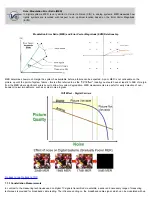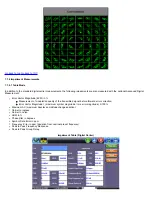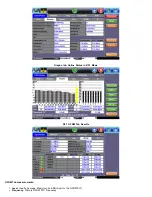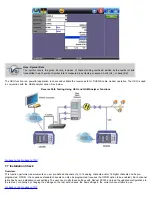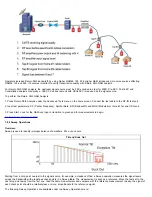
but to measure the total power contained within the 6 or 8MHz carrier. This is similar to needing to measure the area within
the signal (haystack) instead of its height only.
Using this example, the power has to be measured within one channel or within a specific frequency range. Use caution
when viewing digital modulated signals because the signal level is dependent on the selected measurement bandwidth
(resolution bandwidth).
Spectrum Analyzers typically do not have an IF or resolution bandwidth wide enough to measure a whole digital signal at
once. To overcome this problem, the CX380S-D3.1 makes multiple measurements across the frequency range of the carrier.
The powers of each of these measurements are summed up and the average power of the whole channel is calculated.
Note: Amplitude Measurements
Analog TV channel visual carrier amplitude and digitally modulated carrier average power are commonly
measured in decibel millivolt (dBmV), a unit of power expressed in terms of voltage.
Mathematically, dBmV = 20log (signal amplitude in millivolts/1 millivolt).
7.4.3 Ingress Measurements
7.4.3.1 Forward Path Ingress
Overview:
Forward Path Ingress can be analyzed between 54 to 1000MHz (6MHz channel plan) or 108 to 1000MHz (8MHz channel plan).
Ingress noise is a term assigned by cable operators to describe any interference that is coupled into the forward or return path cable plant
via an external source, and can be broadly categorized as follows:
Narrow band ingress:
The predominant coupling mechanism for ingress noise is a poorly shielded drop coaxial cable that acts
more like an antenna than a drop cable. AM modulated carriers, amateur band and maritime radio transmission generate unwanted
signal frequencies at varying amplitudes according to the propagation conditions.
Location specific ingress:
Electronic equipment in the subscriber premises can pass strong signal carriers back into the cable
system, and these can interfere with reverse signals, such as cable modems.
7.4.3.2 Reverse Path Ingress
Overview:
Historic video channel assignments limit the upstream frequencies between 5 - 42MHz (North America) and 5 - 65MHz (Europe). The
upstream spectrum supporting return path connectivity is frequently impaired by ingress of interfering signals, such as Radio Citizen Band
(CB) and other legitimate and non-legitimate RF emissions.
Reverse Ingress can be analyzed between 4 to 42MHz (6MHz channel plan) or 4 to 65MHz (8MHz channel plan).
Return Path Outages
Return Path Noise and Ingress can be a result of:
Stationary impairments
Thermal noise
Intermodulation Distortion (IMD)
Frequency response problems
Transient impairments
RF Ingress
Impulse noise
Signal clipping
Multiplicative impairments
Transient hum modulation
Intermittent connections
Troubleshooting Techniques
Summary of Contents for VEPAL CX350S-D3.1
Page 1: ...CX350s D3 1 e Manual D07 00 102P RevA01 Page 1 of 109 ...
Page 13: ...Go back to top Go back to TOC CX350s D3 1 e Manual D07 00 102P RevA01 Page 13 of 109 ...
Page 16: ...Go back to top Go back to TOC CX350s D3 1 e Manual D07 00 102P RevA01 Page 16 of 109 ...
Page 21: ...Go back to top Go back to TOC CX350s D3 1 e Manual D07 00 102P RevA01 Page 21 of 109 ...
Page 57: ...Go back to top Go back to TOC 7 8 4 Remote Operations ...
Page 76: ...Go back to top Go back to TOC CX350s D3 1 e Manual D07 00 102P RevA01 Page 71 of 109 ...


